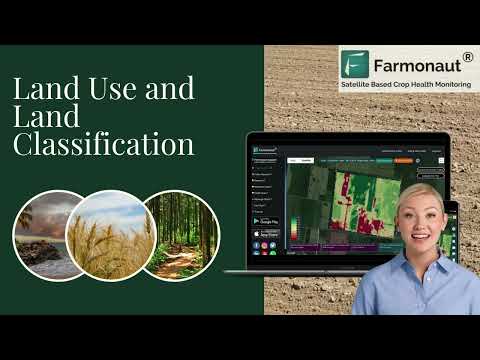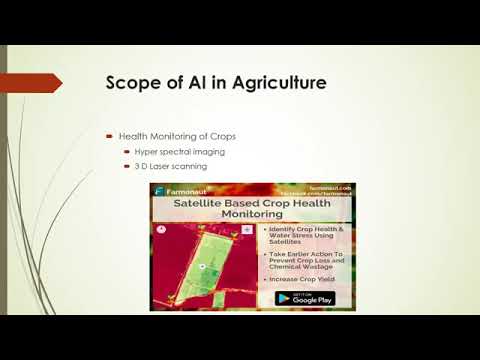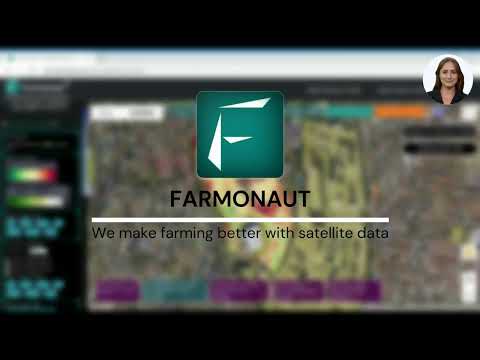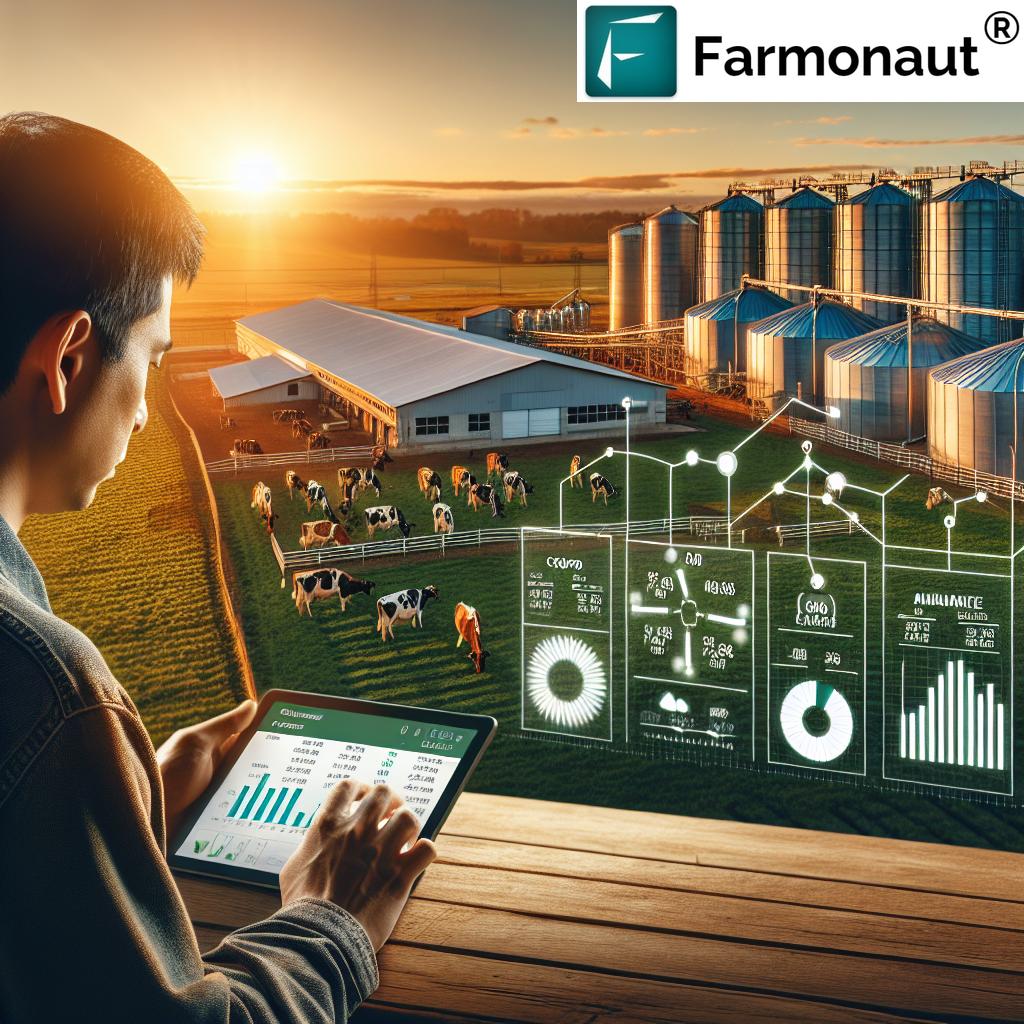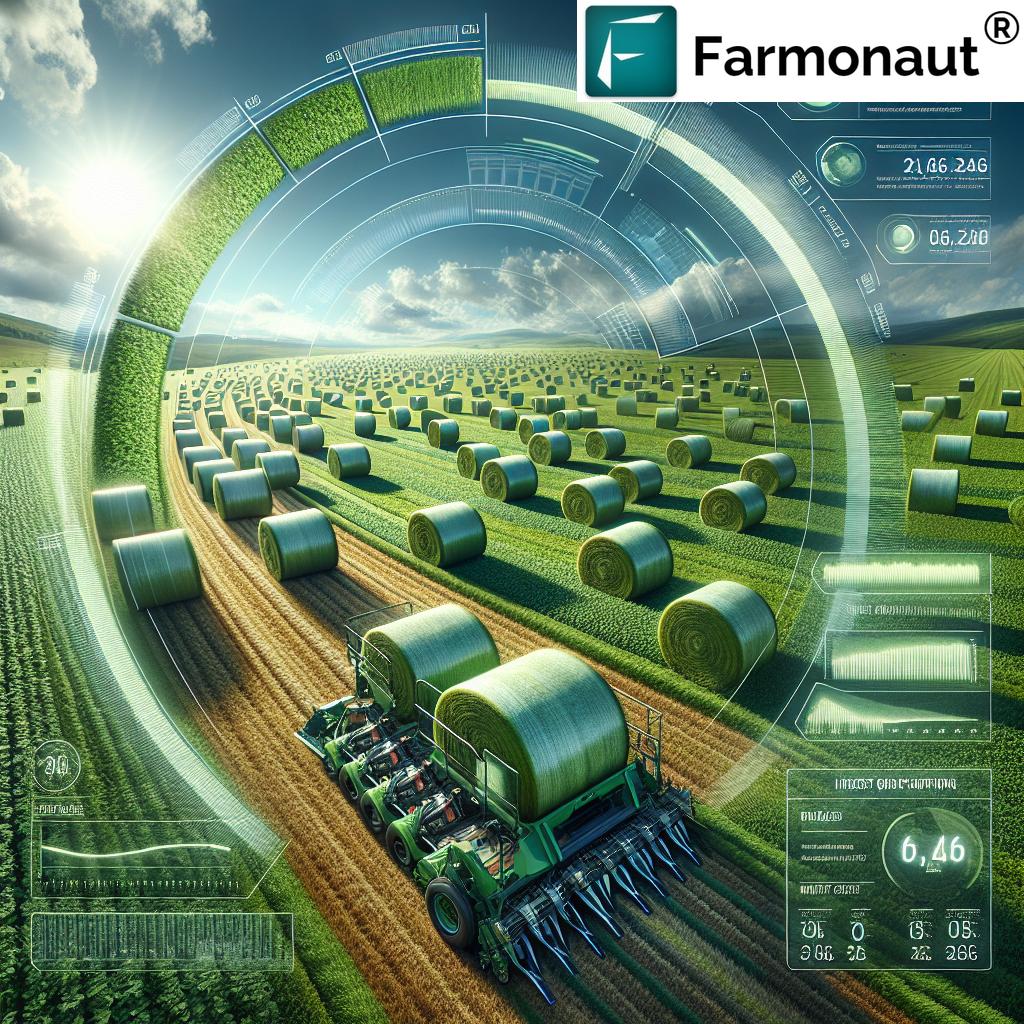Revolutionizing Rural Lending: How Innovative Banking Technology Streamlines Multi-Lender Transactions in America’s Farm Credit System
“This innovative banking technology streamlines multi-lender transactions, enhancing efficiency across the entire loan lifecycle for America’s Farm Credit System.”
In the heart of America’s agricultural landscape, a transformative wave is sweeping through the rural lending sector. We are witnessing a paradigm shift in how financial institutions collaborate, underwrite, and service loans for the backbone of our nation’s food supply chain. This revolution is not just about modernizing outdated systems; it’s about reimagining the entire ecosystem of agricultural financing to better serve the needs of rural America.
At the forefront of this change is a groundbreaking collaboration between industry leaders, set to redefine the farm credit system as we know it. By leveraging cutting-edge API-first and AI-enabled solutions, this innovative banking technology is streamlining multi-lender transactions, enhancing efficiency and transparency across the entire loan lifecycle. The result? A more intelligent, automated ecosystem that minimizes friction in loan origination and servicing through dynamic workflows and real-time data intelligence.

The Evolution of Rural Lending in America
To truly appreciate the magnitude of this transformation, we must first understand the landscape of rural lending in America. For decades, the Farm Credit System has been a crucial lifeline for farmers, ranchers, and rural communities, providing the financial support necessary to sustain and grow their operations. However, the traditional lending process has been fraught with challenges:
- Manual data entry and paperwork
- Slow approval processes
- Limited access to deals due to confined relationships
- Inefficient collaboration between multiple lenders
- Lack of real-time data for informed decision-making
These hurdles have not only slowed down the lending process but have also increased costs and risks for both lenders and borrowers. In an era where agility and data-driven decisions are paramount, the need for a more efficient, transparent, and collaborative system became increasingly apparent.
Enter the New Era of Rural Lending Platforms
“The new rural lending platform leverages API-first and AI-enabled solutions to optimize commitment workflows for financial institutions nationwide.”
The advent of innovative banking technology is ushering in a new era for rural lending. At its core, this platform is designed to address the pain points of traditional lending while amplifying the strengths of the Farm Credit System. Here’s how this technology is revolutionizing the industry:
1. Seamless Data Exchange
Gone are the days of manual data entry and siloed information. The new platform facilitates seamless data exchange between financial institutions, leveraging advanced APIs to ensure that all parties have access to the most up-to-date and accurate information. This not only speeds up the loan origination process but also reduces the likelihood of errors that can lead to costly delays.
2. AI-Driven Underwriting
Artificial Intelligence is at the heart of this revolution, transforming the underwriting process. By analyzing vast amounts of data in real-time, AI algorithms can assess risk more accurately and efficiently than ever before. This leads to faster approvals for creditworthy borrowers and helps lenders make more informed decisions about their loan portfolios.
3. Enhanced Multi-Lender Collaboration
One of the most significant advancements is the platform’s ability to streamline collaboration between multiple lenders. Through a centralized system, banks and financial service providers can easily participate in syndicated loans, share deals, and manage commitments more effectively. This expanded network participation opens up new opportunities for both lenders and borrowers.
4. Dynamic Workflows
The platform introduces dynamic workflows that adapt to the specific needs of each transaction. This flexibility ensures that the loan process is optimized for efficiency, whether it’s a straightforward single-lender loan or a complex multi-lender syndication. By automating routine tasks and streamlining approvals, the platform significantly reduces the time from application to funding.
5. Real-Time Data Intelligence
In the fast-paced world of agricultural finance, having access to real-time data can make all the difference. The platform provides lenders with up-to-the-minute intelligence on market conditions, borrower financials, and portfolio performance. This enables more agile decision-making and helps financial institutions better serve their rural clients.
The Impact on America’s Farm Credit System
The introduction of this innovative banking technology is set to have a profound impact on America’s Farm Credit System. Let’s explore how this transformation is benefiting various stakeholders:
For Financial Institutions
- Increased Efficiency: By automating manual processes and streamlining workflows, banks and credit associations can significantly reduce their operational costs.
- Expanded Reach: The platform’s network effect allows institutions to participate in a wider range of deals, potentially increasing their loan volume and diversifying their portfolios.
- Enhanced Risk Management: With AI-driven analytics and real-time data, lenders can make more informed decisions and better manage their risk exposure.
For Farmers and Rural Borrowers
- Faster Access to Capital: The streamlined process means farmers can get the funding they need more quickly, which is crucial for time-sensitive agricultural operations.
- More Competitive Rates: As lenders become more efficient, the cost savings can be passed on to borrowers in the form of more competitive interest rates.
- Greater Transparency: Borrowers benefit from a more transparent lending process, with clearer communication and visibility into the status of their loans.
For the Rural Economy
- Increased Investment: By making rural lending more efficient and attractive to financial institutions, the platform could lead to increased investment in rural communities.
- Economic Growth: Easier access to capital can spur innovation and growth in the agricultural sector, leading to job creation and economic development in rural areas.
- Sustainability: The platform’s data-driven approach can support more sustainable farming practices by facilitating loans for environmentally friendly initiatives.

The Technology Behind the Revolution
At the heart of this rural lending platform lies a sophisticated technological infrastructure designed to meet the unique needs of agricultural financing. Let’s delve into the key components that make this system a game-changer:
API-First Architecture
The platform’s API-first approach ensures seamless integration with existing banking systems, credit rating agencies, and other financial data providers. This architecture allows for:
- Real-time data synchronization across multiple systems
- Easy integration of new features and services
- Scalability to handle growing transaction volumes
- Enhanced security through standardized data exchange protocols
For financial institutions looking to leverage similar API capabilities in their agricultural technology stack, solutions like Farmonaut’s API offer robust options for integrating satellite and weather data into lending platforms.
AI and Machine Learning Algorithms
The platform employs advanced AI and machine learning algorithms to:
- Assess credit risk more accurately by analyzing a broader range of data points
- Predict market trends and crop yields to inform lending decisions
- Automate routine underwriting tasks, freeing up human experts for more complex cases
- Continuously improve decision-making processes through iterative learning
Blockchain for Transparency and Security
While not explicitly mentioned in the original context, it’s worth noting that many modern financial platforms are incorporating blockchain technology to enhance transparency and security. In the context of rural lending, blockchain can offer:
- Immutable record-keeping for loan transactions
- Smart contracts to automate loan agreements and disbursements
- Enhanced traceability for syndicated loans
- Reduced fraud risk through decentralized verification processes
For those interested in how blockchain technology can be applied to agricultural supply chains, Farmonaut’s traceability solutions provide an excellent example of how this technology can be leveraged to enhance transparency and trust in the agricultural sector.
Cloud-Based Infrastructure
The platform leverages cloud computing to ensure:
- High availability and reliability of services
- Rapid scaling to meet demand spikes during peak lending seasons
- Cost-effective data storage and processing
- Enhanced disaster recovery and business continuity capabilities
Comparative Analysis: Traditional vs. Innovative Lending Practices
To fully appreciate the transformative impact of this new technology, let’s compare traditional rural lending practices with the innovative approach offered by the new platform:
| Aspects | Traditional Lending | New Platform |
|---|---|---|
| Loan Origination Process | Manual, paper-based, time-consuming | Digital, automated, rapid |
| Data Exchange | Siloed, slow, prone to errors | Seamless, real-time, accurate |
| Underwriting Efficiency | Human-dependent, subjective | AI-assisted, data-driven, objective |
| Multi-Lender Collaboration | Complex, limited by relationships | Streamlined, expanded network access |
| Commitment Workflow | Static, inflexible | Dynamic, adaptable to transaction needs |
| Transparency | Limited visibility into process | Full transparency for all stakeholders |
| AI Integration | Minimal or non-existent | Integral to decision-making and process optimization |
| Real-time Data Intelligence | Delayed, often outdated information | Up-to-the-minute market and borrower insights |
| Servicing Efficiency | Labor-intensive, reactive | Automated, proactive management |
| Rural Economy Impact | Limited by process inefficiencies | Enhanced capital flow, stimulating growth |
This comparison clearly illustrates the significant advancements brought by the new platform, showcasing how technology is addressing long-standing challenges in rural lending.
The Role of Satellite Technology in Modern Agricultural Lending
While our focus has been on the lending platform itself, it’s important to recognize the role that complementary technologies play in revolutionizing rural lending. Satellite technology, in particular, has emerged as a powerful tool for enhancing agricultural risk assessment and monitoring.
Companies like Farmonaut are at the forefront of this innovation, offering satellite-based farm management solutions that can be invaluable for lenders and borrowers alike. Here’s how satellite technology is contributing to the evolution of rural lending:
- Crop Health Monitoring: Satellite imagery provides real-time data on crop health, allowing lenders to assess the performance of financed agricultural projects.
- Risk Assessment: By analyzing historical and current satellite data, lenders can better evaluate the risk associated with lending to specific regions or for particular crops.
- Loan Verification: Satellite imagery can be used to verify the existence and extent of claimed farmland, reducing the risk of fraudulent loan applications.
- Yield Prediction: Advanced algorithms can predict crop yields based on satellite data, helping lenders and borrowers make more informed financial decisions.
For financial institutions looking to integrate these capabilities into their lending processes, Farmonaut’s crop loan and insurance solutions offer a comprehensive suite of tools designed specifically for agricultural finance.
The Future of Rural Lending: Trends and Predictions
As we look to the future, several trends are likely to shape the continued evolution of rural lending:
1. Increased Adoption of AI and Machine Learning
We expect to see even more sophisticated AI algorithms being deployed to:
- Predict loan default risks with greater accuracy
- Personalize loan products based on individual farmer profiles
- Automate a larger portion of the underwriting process
2. Integration of IoT and Precision Agriculture Data
The Internet of Things (IoT) and precision agriculture technologies will likely be integrated into lending platforms, providing:
- Real-time data on farm operations and crop conditions
- More accurate assessments of farm productivity and potential
- Enhanced ability to monitor collateral (e.g., livestock, equipment)
3. Blockchain-Enabled Smart Contracts
The use of blockchain technology is expected to grow, offering:
- Automated loan disbursements and repayments based on predefined conditions
- Enhanced traceability of funds throughout the lending process
- Increased security and reduced fraud in multi-lender transactions
4. Expansion of Alternative Data Sources
Lenders will increasingly leverage alternative data sources to assess creditworthiness, including:
- Social media and online behavior
- Mobile phone usage patterns
- Utility bill payment history
5. Greater Focus on Sustainability
Environmental, Social, and Governance (ESG) factors will play a larger role in lending decisions, with platforms incorporating:
- Tools to assess the environmental impact of farming practices
- Incentives for sustainable agriculture through preferential loan terms
- Integration with carbon credit markets
For those interested in how technology can support sustainable farming practices, Farmonaut’s carbon footprinting solutions offer valuable insights into measuring and managing agricultural carbon emissions.
Challenges and Considerations
While the future of rural lending looks promising, there are several challenges and considerations that need to be addressed:
1. Data Privacy and Security
As more data is collected and shared across platforms, ensuring the privacy and security of sensitive financial and personal information becomes paramount. Robust cybersecurity measures and clear data governance policies will be essential.
2. Digital Divide in Rural Areas
The effectiveness of these technologies relies on reliable internet connectivity. Efforts must be made to bridge the digital divide in rural areas to ensure equal access to these innovative lending solutions.
3. Regulatory Compliance
As lending technologies evolve, regulatory frameworks will need to adapt. Ensuring compliance with existing and emerging regulations will be an ongoing challenge for both technology providers and financial institutions.
4. Algorithmic Bias
There’s a risk that AI algorithms could perpetuate or exacerbate existing biases in lending. Continuous monitoring and adjustment of these systems will be necessary to ensure fair and equitable access to credit.
5. Farmer Education and Adoption
For these technologies to reach their full potential, farmers and rural borrowers need to be educated about their benefits and how to use them effectively. Outreach and training programs will be crucial.
Conclusion: A New Dawn for Rural Lending
The revolution in rural lending, driven by innovative banking technology and complementary solutions like satellite-based farm management, represents a new dawn for America’s agricultural sector. By streamlining multi-lender transactions, enhancing transparency, and leveraging advanced data analytics, these platforms are not just improving the efficiency of lending processes – they’re transforming the very fabric of rural finance.
As we move forward, the continued evolution of these technologies promises to bring even greater benefits to farmers, lenders, and rural communities. From AI-driven risk assessment to blockchain-enabled smart contracts, the future of rural lending is set to be more accessible, efficient, and aligned with the needs of modern agriculture.
However, realizing this potential will require ongoing collaboration between technology providers, financial institutions, regulatory bodies, and the farming community. By working together to address challenges and leverage opportunities, we can ensure that rural America has access to the capital it needs to thrive in the 21st century and beyond.
The revolution in rural lending is not just about technology – it’s about empowering farmers, strengthening rural communities, and securing the future of American agriculture. As we embrace these innovations, we pave the way for a more prosperous, sustainable, and resilient rural economy.
FAQ Section
Q: How does the new rural lending platform benefit farmers?
A: The platform offers faster loan approvals, potentially lower interest rates due to increased efficiency, and greater transparency in the lending process. It also provides farmers with access to a wider network of lenders.
Q: Is this technology only for large agricultural operations?
A: No, the platform is designed to serve agricultural operations of all sizes, from small family farms to large commercial enterprises.
Q: How does AI improve the lending process?
A: AI enhances risk assessment accuracy, automates routine tasks, and provides real-time data analysis for more informed decision-making.
Q: Are there concerns about data privacy with this new technology?
A: Data privacy is a top priority. The platform implements robust security measures and complies with all relevant data protection regulations.
Q: How does this platform impact rural community development?
A: By streamlining access to capital, the platform can stimulate economic growth in rural areas, leading to job creation and improved infrastructure.
Q: Can traditional banks integrate with this new lending platform?
A: Yes, the platform is designed with API-first architecture, allowing for seamless integration with existing banking systems.
Q: How does satellite technology contribute to rural lending?
A: Satellite technology provides real-time data on crop health and field conditions, helping lenders assess risks and monitor agricultural projects more effectively.
Q: What role does blockchain play in this new lending ecosystem?
A: While not explicitly mentioned in the original context, blockchain can potentially enhance transparency, security, and efficiency in multi-lender transactions and loan servicing.
Q: How does this platform address the unique challenges of agricultural lending?
A: The platform incorporates specialized risk assessment tools and data sources relevant to agriculture, such as weather patterns, crop yields, and market trends.
Q: What steps are being taken to ensure fair lending practices with this new technology?
A: The platform is designed with built-in compliance checks and regular audits to ensure adherence to fair lending laws and regulations.
Earn With Farmonaut: Affiliate Program
Earn 20% recurring commission with Farmonaut’s affiliate program by sharing your promo code and helping farmers save 10%. Onboard 10 Elite farmers monthly to earn a minimum of $148,000 annually—start now and grow your income!


